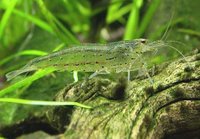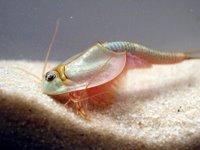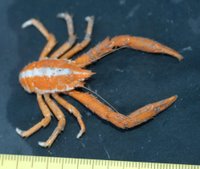Dear Blue Lobster:
I just read about a weird crustacean in Borneo that lives underground and looks like a cross between a lobster and a shrimp. Do you have any information about it? What is it? Where does it come from?
Thanks.
Susanne
Dear Gentle Sir:

This strange crustacean near the city of Kota Kinabalu on the tiny island of Borneo baffles scientists with its unusual morphology. The static claws, for instance, are three times longer than the mobile claw appendage. Most crays have claws that are roughly the same size or at a one-to-two ratio. It is also able to snap its claws so hard it makes an audible clacking sound, much like a Mantis Shrimp. Another distinguishing feature is its tail, which is long and gangly and is incapable of the characteristic cray/lobster tail-flip locomotion.
Natives, who gave this mystery crustacean its name, say the crature is familiar but elusive. The indigenous population have long held modern buildings and technology to be an offense to the spirits of their ancestors. In order to take revenge, their ancestors' spirits arise from the mud in the form of these strange crustaceans and attempt to cut the city-goers' fingers off. Indeed, the name of the city, Kinabalu, means revered place of the dead
in the local tongue.
Strangely, scientists have not been able to extract DNA from the animal for genetic testing and everyone involved in the capture or study of specimens has died under mysterious cicumstances.



